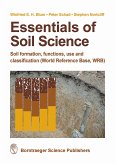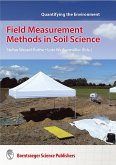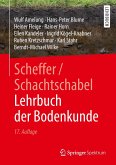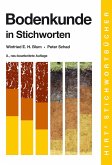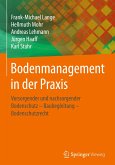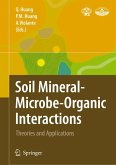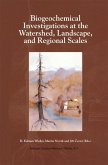Cryosols occupy a unique part of the earth and have properties greatly different from other soils. They also occur where the greatest impact of global warming is predicted. They have been studied extensively in Russia, Canada and in other regions. This is, however, the first book which brings together experts from all fields in order to focus on these unique soils. It will undoubtedly provide one of the best sources of information available about these soils.
Hinweis: Dieser Artikel kann nur an eine deutsche Lieferadresse ausgeliefert werden.
Hinweis: Dieser Artikel kann nur an eine deutsche Lieferadresse ausgeliefert werden.
From the reviews:
"This book summarizes the results achieved by members of the Working Group and their associates, and is the first significant text dedicated to the soils. ... John Kimble, Charles Tarnocai, Sergey Goryachkin and other members of the Cryosol Group are to be heartily congratulated for the production of this book. It is the first authoritative and wide-ranging account of soils that occupy very large areas of the world's polar regions and are likely to have increasing ecological and environmental significance in the future." (J.A. Catt, European Journal of Soil Science, Vol. 56, 2005)
"Cryosols compiles decades of work by scholars, researchers, and field soil practitioners on soils and their management in the permafrost regions of the world. ... Figures and tables are timely and easily interpreted. Each chapter has its own reference list covering many years of peer-reviewed international journals and books ... . Cryosols is a valuable reference for soil scientists, ecologists, biologists, agronomists, foresters, and conservationists interested in the permafrost region. Summing Up: Recommended. Upper-level undergraduates and above." (S.G. Shetron, CHOICE, Vol. 42 (5), January, 2005)
"This volume is an impressive undertaking that summarizes the current state of knowledge concerning the soils of cold regions. ... This book will be of interest for three main reasons. First, it is the only major volume that brings together studies upon cold-climate soils ... . Second, it attempts the difficult task of integrating the different approaches adopted by soil scientists in Russia, Europe and North America. Third, it brings cryosols to the attention of the wider scientific community." (Hugh French, Progress in Physical Geography, Vol. 30 (1), 2006)
"This book summarizes the results achieved by members of the Working Group and their associates, and is the first significant text dedicated to the soils. ... John Kimble, Charles Tarnocai, Sergey Goryachkin and other members of the Cryosol Group are to be heartily congratulated for the production of this book. It is the first authoritative and wide-ranging account of soils that occupy very large areas of the world's polar regions and are likely to have increasing ecological and environmental significance in the future." (J.A. Catt, European Journal of Soil Science, Vol. 56, 2005)
"Cryosols compiles decades of work by scholars, researchers, and field soil practitioners on soils and their management in the permafrost regions of the world. ... Figures and tables are timely and easily interpreted. Each chapter has its own reference list covering many years of peer-reviewed international journals and books ... . Cryosols is a valuable reference for soil scientists, ecologists, biologists, agronomists, foresters, and conservationists interested in the permafrost region. Summing Up: Recommended. Upper-level undergraduates and above." (S.G. Shetron, CHOICE, Vol. 42 (5), January, 2005)
"This volume is an impressive undertaking that summarizes the current state of knowledge concerning the soils of cold regions. ... This book will be of interest for three main reasons. First, it is the only major volume that brings together studies upon cold-climate soils ... . Second, it attempts the difficult task of integrating the different approaches adopted by soil scientists in Russia, Europe and North America. Third, it brings cryosols to the attention of the wider scientific community." (Hugh French, Progress in Physical Geography, Vol. 30 (1), 2006)


